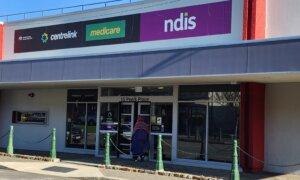The federal budget is a “missed opportunity” to address health system issues and rural health equity, several health organisations said.
“More urgent care clinics is not a long-term strategic solution, and the government keeps looking to fund more of them without proper evaluation of their impact. What we need is reform that enables general practice to deliver the primary care that our patients need, not piecemeal announcements and changes that further fragment the system,” Australian Medical Association (AMA) President Professor Steve Robson said.
Among the healthcare priorities of the budget is investing $227 million (US$152 million) to add 29 Medicare Urgent Care Centres (UCCs) to ensure that essential services are available to more communities across Australia, fully bulk-billed without the long wait in busy hospital emergency departments.
Health and Aged Care Minister Mark Butler noted that the previous budgets already rolled out 58 Medicare UCCs in the country.
But Allied Health Professionals Australia (AHPA) expressed concern for the expansion of a model that had not yet been properly evaluated, as the use of UCCs was still low.
“Existing clinics are not maximising the scope of practice of professions such as physiotherapy. Without systematic evaluation we don’t anticipate this next 29 will be any different,” AHPA CEO Bronwyn Morris-Donovan said.
“This is a missed opportunity to utilise the allied health workforce improve access to urgent care, especially for rural and remote Australians.”
AMA said that the budget should have prioritised improved funding arrangements for general practice (GP) amid a declining workforce, so patients can see their doctors whenever necessary, including out of business hours.
“Australia has a GP shortage that will only get worse. We need to encourage more doctors to take up general practice by ensuring GP trainees are offered equitable employment conditions in comparison to their hospital counterparts. And we need an independent planning agency to ensure that the future health workforce meets community need,” Mr. Robson said.
Meanwhile, AHPA called for more initiatives for healthcare professionals responding to patients with chronic and complex conditions.
Ms. Morris-Donovan added that $16 million provision over four years from 2024–25 and $200,000 per year ongoing to incentivise GPs to provide single discipline care is disenabling to multidisciplinary care.
“Consumers are stuck with the outdated model of five allied health sessions per calendar year. With a declining GP workforce and record low bulk billing rates consumers with chronic disease are finding it harder than ever to get into their GP,” she said.
Budget Allocates $71.3 Million for Rural, Regional Health
Similarly, the National Rural Health Alliance (NRHA) welcomed the commitment to support rural training opportunities and the introduction of Commonwealth Prac Payment but flagged the lack of healthcare funding for rural communities.The NRHA emphasised that rural men are 2.5 times and women 2.8 times more likely to die from potentially avoidable causes than those in urban areas.
NRHA’s comment came despite an additional $71.3 million funding over three years to support the delivery of essential health services to rural and remote Australians through the Royal Flying Doctor Service (RFDS).
“We are also pleased to see the Royal Flying Doctors Service supported with top up funding to deal with the increasing costs of service delivery of vital services they provide to rural communities. But their model is only one that addresses the vast variety of health care needs across rural and remote Australia,” NRHA Chairperson Nicole O'Reilly said.
“There are many struggling rural and remote primary health care services that are on the brink of closure and need support and significant reform.”

Budget Breakdown for Health
The budget has also allocated $882.2 million to take pressure off hospitals and $361 million over four years to expand the range of free mental health services.The budget also earmarked $69.8 million to expand the number of Medicare eligible MRI machines, $266.9 million so Medicare rebates increase each year for nuclear medicine imaging and common medical tests, and $91.1 million to boost the supply of healthcare in areas of shortage inclusive of RFDS funding.
Moreover, the budget designated $469.1 million to cut patient costs and improve access to medicines, $3.4 billion to list new medicines on the PBS, $18.8 million to make Australia a destination for clinical trials, and $1.4 billion over 13 years in new health and medical research through the Medical Research Future Fund.
“While full details will follow, the government’s commitment to funding further wage increases in aged care will certainly be welcomed by under-paid and undervalued, predominantly female, workers,” Australian Nursing and Midwifery Federation Federal Secretary Annie Butler said.
“But we are calling on the government to commit to bold reforms, which empower nurses and midwives to work to their full scope of practice—and the additional [Medicare] rebates announced in tonight’s budget for midwives, is a promising first-step for our members.”
The budget also appropriated $25.3 million to prevent skin cancer, $38.8 million to continue funding for free bowel cancer screening under the National Bowel Cancer Screening Program, $43.9 million to work towards eliminating HIV transmission by 2030, and $132.7 million to boost sports participation.






